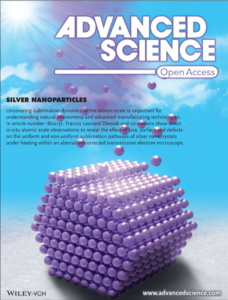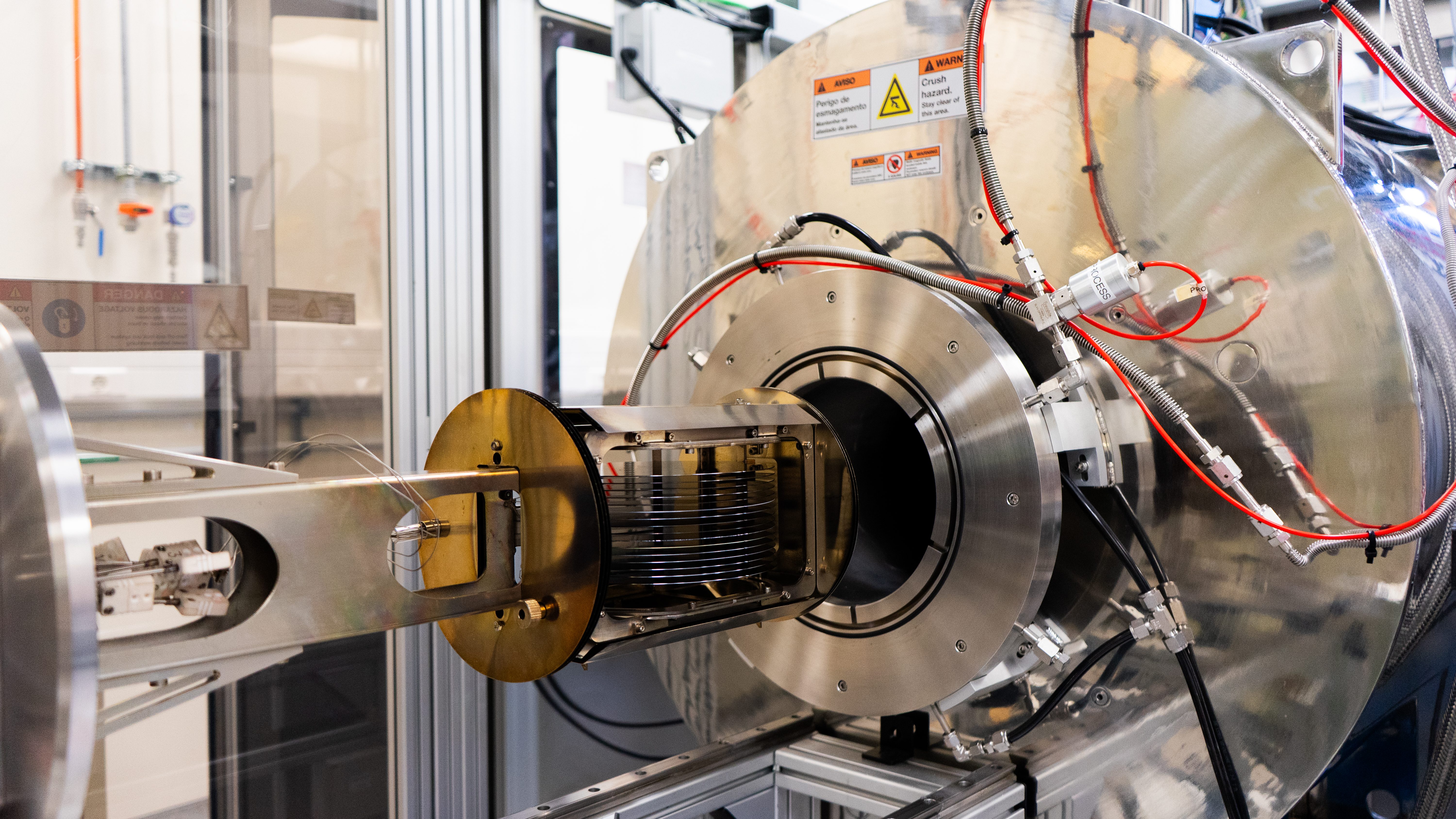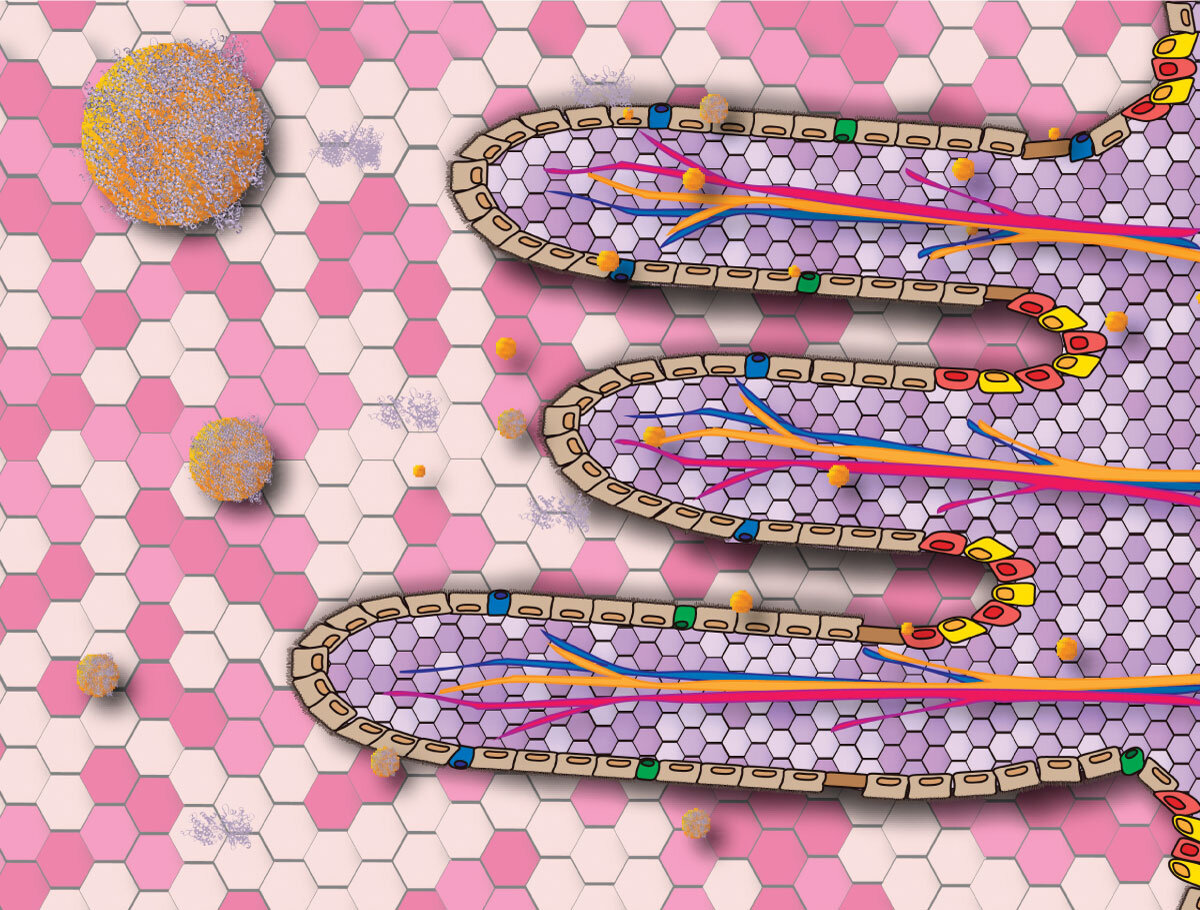
INL research on silver nanoparticles highlighted in Advanced Science
May 6, 2019
Research on silver nanoparticles conducted by INL researcher Leonard Francis and his team was featured in the frontispiece of the prestigious scientific journal Advanced Science latest edition.
The paper starts by analysing the role of sublimation at the atomic scale.
The process by which a crystal sublimates into a gas is a first‐order phase transition of considerable fundamental and practical importance in condensed matter physics, material science, and climate change, yet a detailed understanding of its relevant kinetic pathways is still evolving even for model systems whose equilibrium configuration is known in advance.
For over a century, scientists have speculated on how ice sublimates and which key factors (e.g., particle size, morphology, defects) influence sublimation.
Although there are some examples of sublimation at the nanoscale, many critical neither fully understood nor clearly established at the atomic scale. For example, how do we understand the surface behaviour and sublimation kinetics at the atomic scale, and what is the role of structural evolution, dynamic processes, sublimation mechanisms, and role of defects during sublimation at the atomic scale?
In the article now published in Advanced Science (In Situ Atomic‐Scale Observation of Kinetic Pathways of Sublimation in Silver Nanoparticles, Adv. Sci. 8/2019, 1802131) researchers from the INL Nanostructured Materials Group show direct in-situ atomic-scale observations to reveal the effect of size, surface and defects on the uniform and non-uniform sublimation pathways of Silver nanocrystals (which is used as a model system) under heating within an aberration-corrected Transmission electron microscope.
The studies reveal the uniform and non-uniform sublimation pathways in the solid‐to‐gas first‐order phase transformation and provide evidence that the sublimation‐induced stable surface in the Ag nanocrystal with a size smaller than ≈ 30 nm is the and planes rather than the plane in large Ag particles. Atomic rearrangement during sublimation is identified and as to how size, surface, and defects affect the sublimation pathways and dynamics is revealed. The results show that the particles with low surface energy tend to undergo a uniform sublimation pathway, while those with high surface energy or fivefold twin grain boundary take the non-uniform sublimation pathway. Further dynamic analysis reveals a critical size of ≈ 8 nm for the transformation from linear to a nonlinear sublimation rate for the two pathways.
The ability to conduct in situ atomic‐scale observation of kinetic pathways of sublimation in nanomaterials represents a significant step forward in understanding atomic mechanisms of the solid‐gas phase transitions. The findings in the present study demonstrate that the solid‐to‐gas transformation of nanoparticles cannot be regarded solely as a size‐dependent phenomenon but involves both size and surface energy, advancing our understanding of a range of technological applications, including sublimation-based purification, thin film deposition, and fabrication of nanoparticles.



